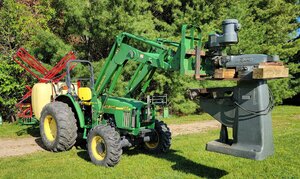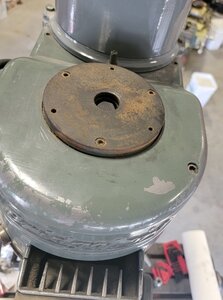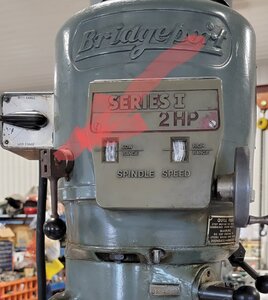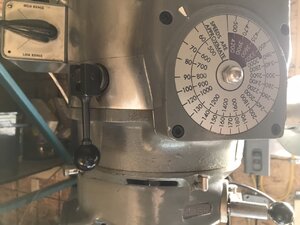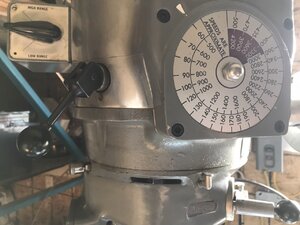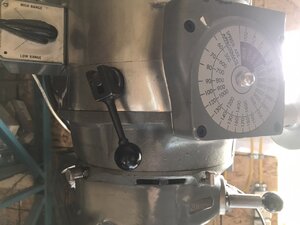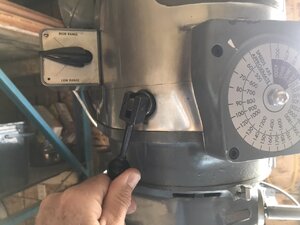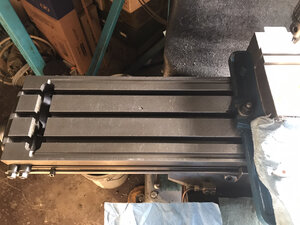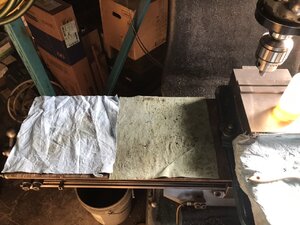Just acquired a new to me Bridgeport Mill. I do not have access to 3ph power - only 110/220 so I can't actually run the machine yet.
Here is a quick link to the original thread about finding a good mill.
https://canadianhobbymetalworkers.com/threads/where-to-get-good-used-mill.3372/
Here is a link to the Hartford mill I acquired at the same time.
https://canadianhobbymetalworkers.com/threads/new-to-me-hartford-mill.3490/
Here is a quick survey of the mill and its condition as received:
Bridgeport Textron
Series I - 2Hp
US Electric Motors 575
Rewound by Morrish
(morrishemco.com) to 430V
Serial Number J221566
Drive Serial Number 2J 88733/2
Gross weight approximately 2000 pounds
Bed is rusty and badly hen pecked
Needs to be scraped
90 thou x-axis over length
105 thou y-axis over length
Oil pump plunger sticks when pulled up
Y slides good condition ways and Gibbs good
X slides good condition ways and gibbs good
Z slides good condition
Left Side
Head too far forward.
Broken left side handle
Missing pull knob
What is cam lock left of speed
adjust for?
Spindle brake? Won't lock
Speed adjust seems
WAY too loose
Right side
Missing original Quill arm
(has homemade one)
Missing Base Pillar lock arm
Power Quill Feed seems ok
Speed Range
can't keep it in neutral
Front
Quill manual wheel missing
Table Lift lever ok
Table lift lock arm broken off
No way to clamp R8 tools
to tighten draw bar
Spindle
Rotates freely and smoothly
R8 key pin Missing
Can't lock Spindle
to tighten drawbar














Here is a quick link to the original thread about finding a good mill.
https://canadianhobbymetalworkers.com/threads/where-to-get-good-used-mill.3372/
Here is a link to the Hartford mill I acquired at the same time.
https://canadianhobbymetalworkers.com/threads/new-to-me-hartford-mill.3490/
Here is a quick survey of the mill and its condition as received:
Bridgeport Textron
Series I - 2Hp
US Electric Motors 575
Rewound by Morrish
(morrishemco.com) to 430V
Serial Number J221566
Drive Serial Number 2J 88733/2
Gross weight approximately 2000 pounds
Bed is rusty and badly hen pecked
Needs to be scraped
90 thou x-axis over length
105 thou y-axis over length
Oil pump plunger sticks when pulled up
Y slides good condition ways and Gibbs good
X slides good condition ways and gibbs good
Z slides good condition
Left Side
Head too far forward.
Broken left side handle
Missing pull knob
What is cam lock left of speed
adjust for?
Spindle brake? Won't lock
Speed adjust seems
WAY too loose
Right side
Missing original Quill arm
(has homemade one)
Missing Base Pillar lock arm
Power Quill Feed seems ok
Speed Range
can't keep it in neutral
Front
Quill manual wheel missing
Table Lift lever ok
Table lift lock arm broken off
No way to clamp R8 tools
to tighten draw bar
Spindle
Rotates freely and smoothly
R8 key pin Missing
Can't lock Spindle
to tighten drawbar
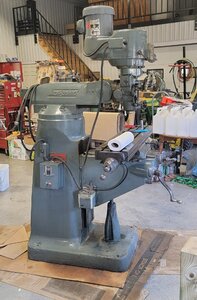
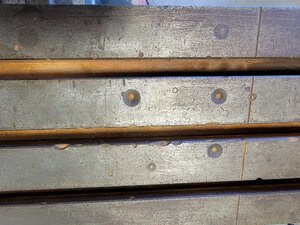
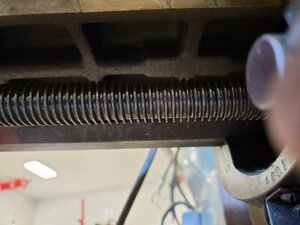

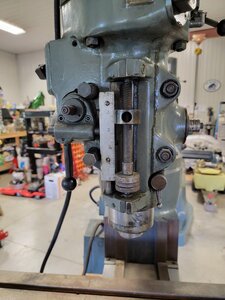
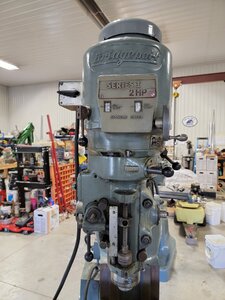
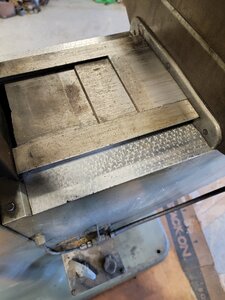

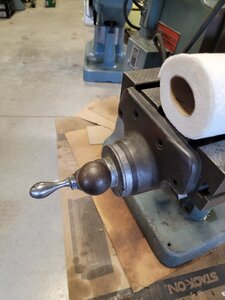





Last edited:

